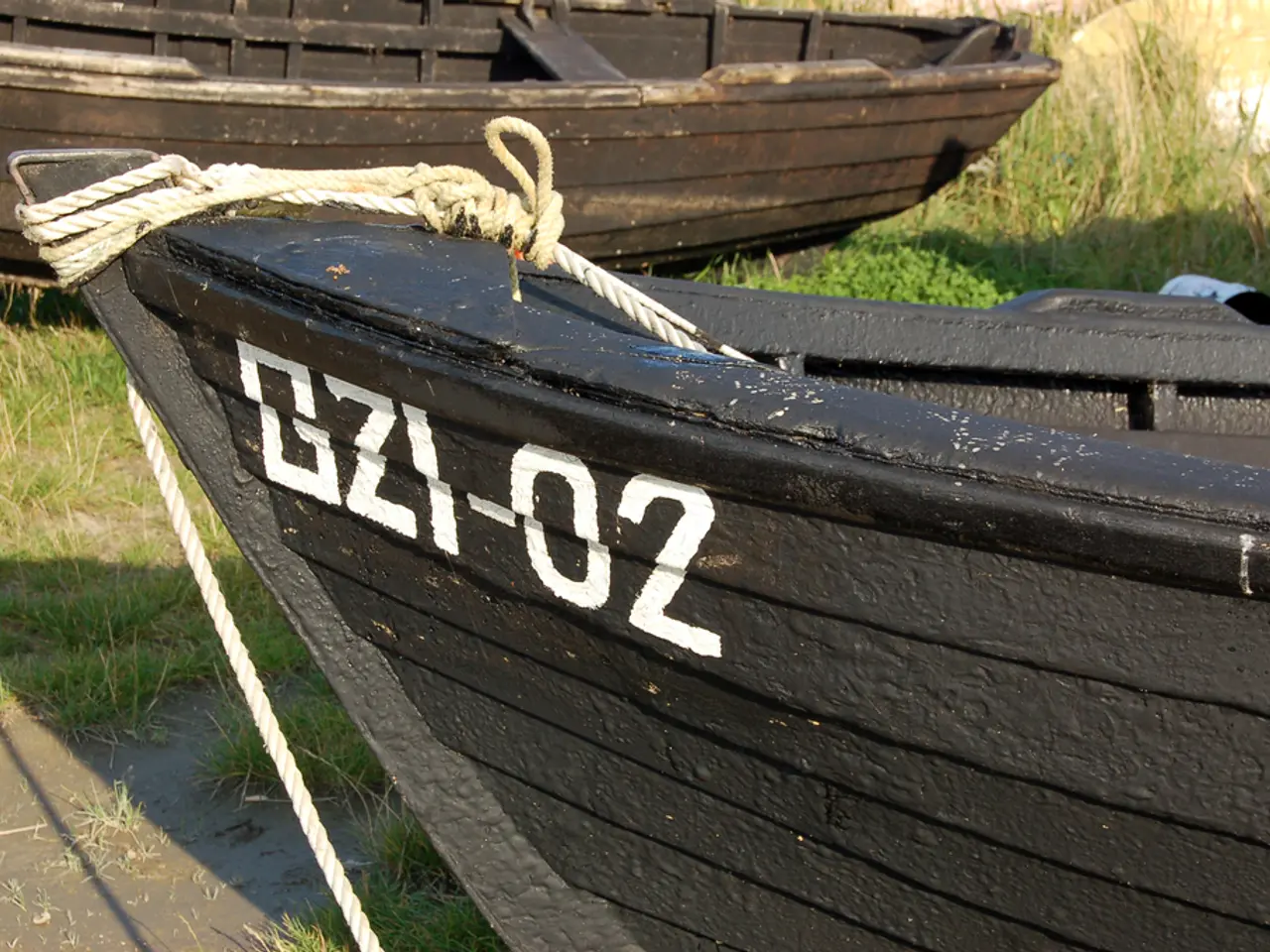Investigation of Self-Directed Processes in Arctic Regions
In the frigid waters of Thunder Bay, Ontario, a groundbreaking operation was recently conducted, showcasing the potential of autonomous technology in hydrographic surveys. The operation, a partnership between IIC Technologies and XOCEAN, was commissioned by the Department of Fisheries and Oceans' Canadian Hydrographic Service (CHS) to collect high-resolution bathymetric data in inland Canadian waters.
The operation involved the use of two XOCEAN USVs, each weighing 750kg and measuring 4.5m x 2.2m. These Uncrewed Surface Vessels (USVs) were specifically designed for the task at hand, equipped with 360-degree visual light cameras, AIS, and a rotating thermal imaging camera, among other survey equipment.
However, challenges arose when a second USV arrived with a different design for the air intake system. This design proved problematic when the gantry froze over, causing ice to block the intake. To address this issue, IIC installed two 1-inch skin fittings at the stern of the second USV and ran flex hose down into the bilge with a "goose neck" to allow for a constant flow of fresh air.
The USVs provided several advantages over traditional methods. Their autonomous nature enabled extended operational duration and range, allowing them to map vast and remote Arctic areas that are difficult and dangerous for human crews to access. The vessels could navigate and optimize routes in real-time despite shifting ice, tides, and underwater topography, a characteristic of Arctic environments.
Moreover, the USVs significantly increased safety and reduced risk by enabling remote or pre-programmed missions in unstable conditions. They collected detailed bathymetric data crucial for safe navigation and updating aids to navigation (ATONs), which are vital in dynamic Arctic waterways like the Kuskokwim River.
The operation in Thunder Bay was a success, and it demonstrated the potential of autonomous technology in hydrographic surveys. The CHS wanted to test the suitability of the latest autonomous survey technology in remote locations with challenging weather conditions, specifically in Lake Superior during late Autumn. The need for high-quality hydrospatial multidimensional data in Arctic waters has increased greatly in recent years due to the retreating sea ice and growing interest in maritime activities.
However, working in the Arctic presents its own set of challenges. Cold temperatures require special considerations for equipment maintenance and storage to prevent freezing and potential damage. Space heaters were placed in all storage spaces, and the crew would regularly sweep out the puddles of water that formed due to thawing.
Despite these challenges, autonomous technology can significantly improve the efficiency and effectiveness of hydrographic operations in Arctic waters. It enables more frequent, thorough, and safer hydrographic surveys, overcoming human limitations in extreme environments, reducing operational costs, and delivering higher-quality seabed data critical to navigation, environmental monitoring, and resource management.
The operation in Thunder Bay marks a significant step forward in the use of autonomous technology for hydrographic surveys. As the Arctic becomes increasingly accessible, the benefits of these technologies are set to grow, revolutionizing the way we map and understand this vast and challenging region.
- The operation in Thunder Bay emphasized the potential of autonomous technology in the field of environmental-science, specifically in hydrographic surveys.
- The use of cybersecurity measures is crucial in ensuring the successful implementation of such autonomous systems.
- In the realm of lifestyle, advancements in hydrographic surveys may lead to improved weather forecasting, influencing daily routines and travel plans.
- The fusion of technology with hydrographic surveys can offer valuable insights for scientists studying climate-change and its impact on Arctic waters.
- The collaboration between IIC Technologies and XOCEAN in Thunder Bay showcases the integration of autonomous technology in the broader field of technology, particularly in gadgets designed for data-and-cloud-computing and artificial-intelligence.
- The fashion-and-beauty industry could potentially benefit from the data generated by these hydrographic surveys, as it may be used to predict seasonal trends in the Arctic region.
- Food-and-drink companies might also find value in hydrographic data, enabling them to monitor and predict changes in Arctic water sources, affecting the availability and quality of seafood.
- The home-and-garden sector could utilize hydrographic surveys to study the effects of climate-change on waterways, aiding in the creation of weather-resistant and environmentally sustainable homes in the Arctic region.




